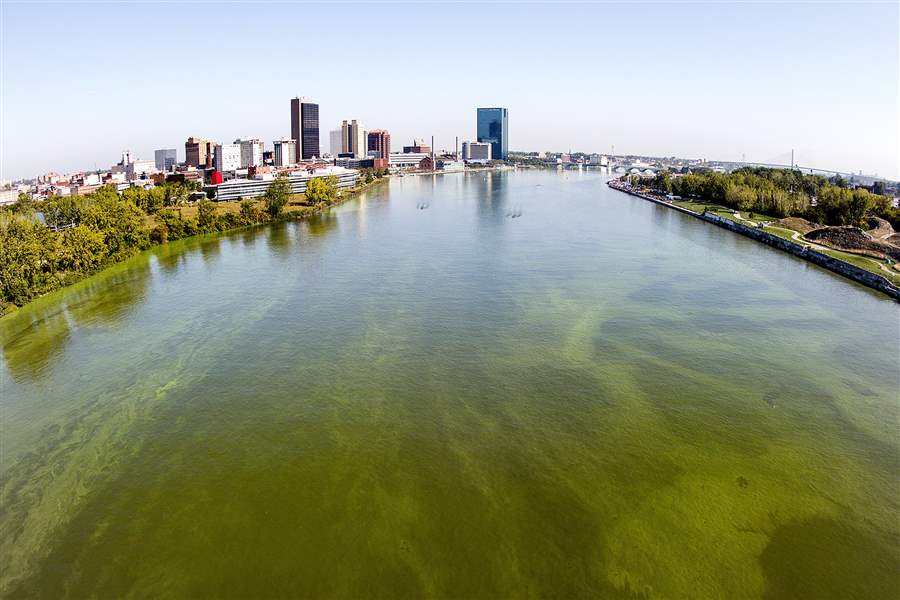
EDITORIAL
Where are all the volunteers to save Lake Erie?
12/21/2017
Algae covers the Maumee River in September.
THE BLADE
Buy This Image
The nonprofit Lake Erie Foundation recently presented a study to local business and elected leaders, calling for action on Lake Erie. It is another wake-up call we ought not to sleep through.
The foundation called for authorities to pressure agricultural operations to stop the Lake Erie pollution that creates toxic algae blooms each summer.
Click here to view more Blade editorials
The foundation’s white paper explained that 97 percent of the acreage draining into the western Lake Erie watershed belongs to farms that are 50 acres or larger.
That should mean that concentrating pollution-reduction efforts on these farms will bring the biggest bang for the buck in terms of cutting the amount of algae-feeding pollution running off the farmland and into streams and rivers that flow to the lake.
In fact, the foundation’s research showed that if the region focuses on just two effective strategies — injecting manure into the ground rather than applying it at the surface, and limiting phosphorus applications to 50 parts per million or less — we could reach the goal of reducing phosphorus pollution by 40 percent.
This news is hard to believe, but not at all surprising.
For years experts have called on local, state, and federal authorities to focus on these sorts of pollution-reducing plans.
The problem is that even though we know what will cut the algae-feeding pollution that threatens the region’s clean water, fishing and tourism industry, economic growth, and quality of life, we have not gotten serious about it. Meanwhile, the lake grows more and more polluted; the algae becomes more and more of a threat.
State and local authorities ought to pursue the foundation’s practical suggestions for helping farmers reduce runoff. The suggestion that local soil and water conservation districts could promote equipment-sharing programs that allow farmers access to expensive manure-injection machines is a solid start.
But the Lake Erie Foundation’s report is a reminder that even though the strategies for reducing agricultural runoff are obvious, the region simply is not pursuing them quickly or broadly enough to save the lake. That is because the measures are only voluntary. And while they have been voluntary, the region has made no progress toward reducing runoff and phosphorus pollution flowing into Lake Erie.
State officials with the authority to effect dramatic and substantial improvement by calling in federal help need to do that immediately. Gov. John Kasich must give up the pipe dream that the region’s agricultural operations are going to volunteer their way to a clean lake.
The governor must declare Lake Erie impaired and trigger federal intervention that will set pollution standards with teeth. Goodwill and pious talk long ago ceased being enough.